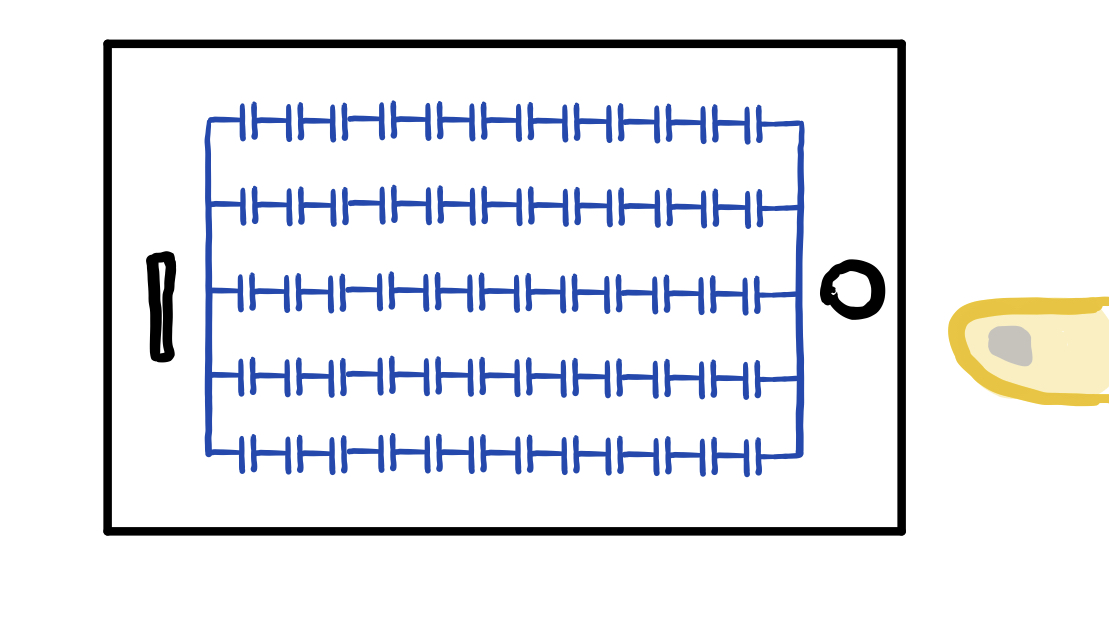Physics of Capacitive Touch Screens
Why does your phone do something when you touch the screen?

In general, we have two types of capacitive touch screens. Out of those two we are going to focus on one type, projective capacitive. Above you will see a grid of capacitors (Two parallel/vertical lines) hooked up to a battery. In its most basic form, a capacitor is composed of two conductive electrodes with a separation at the center. Electricity will gather in this gap. Now you might be asking yourself why does this matter? When you go to interact with the display on your phone something interesting happens, you complete the circuit. To quote my physics professor “That’s Pretty Cool!”- David Newman every day in class (And yes, it is always cool). Let me elaborate a little more on what I mean when I say, “complete the circuit”. You as a human are a decent conductor, electricity likes traveling through you. When your finger makes contact with that screen there is a voltage drop with in that capacitor. This is the reason that the capacitors are set up in grid system like the figure above. A device with a capacitive touch screen has hardware that, using an x and y grid can calculate where the voltage drop is located and tell that devices operating system where the touch happened. From this point on its all software. For more information on capacitors click the capacitors tab.